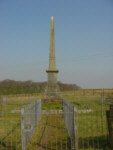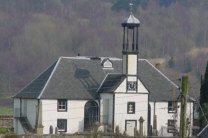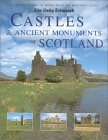Accommodation
Archaeology
Articles and reviews
Arts
Art for sale
Scottish Books
Calendars
Castles and Historic Houses
Famous Scots
Family/Genealogy
Gaelic/Language
Golf
Home Page
Humour
Museums & Attractions
News and Breaking Stories
Picture Gallery
Places to visit
Poster Store
Privacy Statement
Quizzes and puzzles (Fun Only)
Recipes
Small Ads
Site Map
Whisky
Links
A journey through Scotland's "killing times"
The Stuart Kings believed in the divine right of the Monarch, whereas the Covenanters couldn't accept that the King was the spiritual head of the church(only Jesus Christ could be the spiritual head of any church). This belief clearly put them at odds with the Crown and they were willing to fight for their beliefs.
King Charles 1 had introduced the book of common prayer in 1637 and any dissension (such as preaching ) from this, became an act punishable by heavy fines or ultimately death. These times became known as "the killing times" and was a particularly dark period in Scottish history. There were a few battles such as those at Drumclog, where armed worshippers routed the battle hardened Dragoons led by John Graham of Claverhouse (later Viscount Dundee)

Unfortunately for the Covenanters the success was short lived and they were heavily defeated at the battle of Bothwell Bridge some three weeks later.
Following their defeat conditions, worsened for the covenanters and memorials can be found all over south west Scotland testifying to this. Some are to be found in Kirkyards whilst many will be found on open hillside marking the spot where many, trapped, offered the chance to make an oath of allegiance, refused and were summarily executed.
There are some buildings remaining from the time which were not burned or raised to the ground. Dalserf church(1655) is an interesting little church in a very quiet village in the clyde valley(or garden valley as it is becoming more popularly known as). It has seven exit doors, so that lookouts could be posted facing every direction to give the congregation ample time to flee.
Dark days indeed for Scotland but as with many of these events it helped to shape a Nation

For a full account of the Covenanters see the article by Brian Orr

